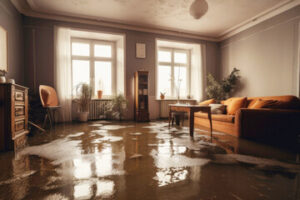Nicholson Insurance is a form of risk transfer that allows individuals to spread the risks of loss to many people. Individuals pay a fee called a premium regularly in exchange for insurance cover.

A good insurance company will take the time to understand your specific needs and recommend a right policy for you. It will also provide a detailed breakdown of fees and coverages to avoid surprises.
The insurance industry is based on the concept of risk transfer, which involves one party paying another to take on responsibility for potential financial and business risks. The insurance company then assesses the risk and determines whether it is acceptable and at what premium. The process of transferring risk is fundamental to the business model of the insurance industry, and is the reason why people purchase insurance policies.
There are a number of ways to undergo the process of risk transfer, but purchasing insurance is by far the most popular. Purchasing an insurance policy transfers financial risks to the insurance company in exchange for a fee, known as the insurance premium. This fee can be paid on a monthly, quarterly, half-yearly or yearly basis throughout the life of the policy.
Insurance companies can also transfer their own risk through reinsurance agreements, which allow them to split the cost of large claims with other insurance and reinsurance companies. This helps them to limit their losses and maintain a profitable operation. In addition, it also allows them to accept a greater range of risks than they can handle on their own.
In addition to purchasing insurance, businesses can transfer risk by utilizing contractors, subcontractors and service providers. This practice is known as contractual risk transfer (CRT). It is a legal method of transferring risk, and it can be beneficial for businesses that are exposed to unforeseen risks, such as lawsuits or property damage.
The process of transferring risk through CRT involves an agreement between two parties, whereby one party agrees to indemnify the other for any damages or injuries that occur on their property. It is essential for any business owner to implement this method of risk transfer, as it can protect them from costly liability claims.
Another important benefit of insurance is that it helps prevent monopolies from forming in an industry. Without insurance, the largest companies in an industry can eat up smaller competitors and leave them struggling to survive. With the help of insurance, however, small businesses have access to financial support if they are unable to pay their premiums. This makes it much harder for big companies to swallow small businesses and create a monopoly.
It is a contract between an insured and an insurer
Insurance is a contract between an insured and an insurer that guarantees compensation to the insured in case of unfortunate events. This includes, but is not limited to, death or destruction of the insured’s property. The insurer promises to compensate the insured in exchange for a periodic payment, called a premium. The insured, in turn, promises to pay the premium and abide by the terms of the contract. The terms of the contract are based on the principle of utmost good faith, which means that both parties must disclose all relevant facts and information in their application for insurance.
All contracts must contain at least the following elements to be valid: consideration, identification of all parties (the insured, the insurer, and beneficiaries), agreement on all material terms, including the policy amount, the period for which coverage is provided, the specific loss event covered, and exclusions. The contract must also include a statement that both parties intend to be bound by the terms of the contract. It must also be signed by all parties and evidenced by a written signature.
A valid insurance contract must be enforceable, which means that the insured can sue the insurer for breach of contract. Insurers must be able to fulfill their obligations, which means that they must be financially solvent and licensed by the appropriate authorities. The contract must also be free of illegal and immoral purposes, such as encouraging activities that violate the law or public order.
There are several types of insurance policies, each with its own set of terms and conditions. These may include deductibles, premiums, and policy benefits. A deductible is the amount that the insured must pay before the insurance company starts to cover losses. Premiums are the recurring fees that the insured must pay to the insurer, and they can be paid monthly, quarterly, semiannually, annually, or a lump sum.
Insurers must have a valid insurance contract to protect themselves against claims that exceed their assets. In order to qualify for an insurance contract, the insured must provide a statement that they are willing to accept the risks associated with the policy. The statement is known as a representation, and it must be true in every respect. The truth of a representation is important because it will influence the insurer’s decision to issue a policy. If a representation is untrue, the insurer may void the contract or refuse to pay any claims.
It is based on the law of large numbers
The law of large numbers, in probability and statistics, states that as the sample size increases, the mean gets closer to the average. This is an important concept in insurance because it allows the company to predict loss rates more accurately. This helps them set premiums that are affordable to their clients and allow them to make a profit. Insurance companies use this theory when determining how much to charge their clients, and when assessing whether or not to accept their applications through underwriting.
In addition to the law of large numbers, insurance relies on the concept of pooling resources. This is the fundamental principle that allows the company to turn financial uncertainty into certainty and eliminate risk through the power of statistical analysis. The pooling of resources also allows the insurance company to pay out claims in a predictable manner. This makes insurance a valuable product for society.
One of the primary benefits of insurance is that it can be used to hedge against mortality, the most common type of risk for which people take out policies. To be able to do this, however, the insurer must have a large number of potential customers to offset the risk of one death. This is why the life insurance industry uses actuarial science to calculate its mortality tables.
Actuaries are professionals who use mathematics and probability to forecast the likelihood of certain events, such as car accidents, that would require the company to pay out a claim. By using the law of large numbers, they are able to calculate exactly how many losses the company will experience per year and ensure that it has enough money to cover them.
The law of large numbers is also useful in predicting how often a particular event will occur in a given population. For example, if you flip a coin 100 times, the chances of getting heads is one in every 100. This is the same logic behind the odds of drawing a certain card in a deck of 52 cards.
There are some risks that the law of large numbers cannot mitigate, such as the risk of nuclear or biological warfare, which is unlikely to impact a huge amount of people simultaneously. Likewise, it is difficult to insure against the possibility of the entire population being affected by a disease or fire. This is because these events are not caused by one individual, but are spread from person to person (or city to city).
It is based on underwriting
Underwriting is a key component of the insurance process. It’s the way insurance companies decide which risks to take and how much they should charge for them. It also determines whether a company will be profitable. If a company loses too much money, it may run out of cash and cease operations.
The underwriting process varies according to the type of policy. For example, for a mortgage, the underwriter looks at the borrower’s credit history and financial status. For health insurance, underwriters consider the applicant’s medical history and lifestyle habits. Some underwriters specialize in specific types of insurance, while others focus on general categories like automobile or home insurance. The underwriter then evaluates the application and decides whether it should be approved or rejected.
Many insurance policies are underwritten by an underwriter who works for the insurance company. Insurance underwriters review applications for coverage and determine which applicants will receive coverage and how much they’ll pay. They also evaluate how likely a person is to make a claim and determine whether or not they’re a good risk. They also help create the policy’s wordings and add endorsements, which are special modifications tacked on to policies on a case-by-case basis.
Underwriters must balance the need to accept risks with the need to meet profit goals. If they reject too many high-risk submissions, the company will fail to earn enough money to cover claims. They can reduce their exposure to these risks by limiting the number of policies they offer or by lowering coverage limits and deductibles.
In addition to evaluating the risk of each applicant, underwriters must make sure that they’re offering the right coverage at the best price. They can do this by comparing rates with their competitors or using benchmarks that reflect market trends. They can also use underwriting criteria to limit their exposure to certain markets or geographic areas.
Having an insurance broker that has strong relationships with a selection of insurance underwriters can increase your chances of getting the coverage you want at a reasonable rate. They can also provide you with helpful information about the underwriting process, including how to improve your chances of being accepted for a policy.








